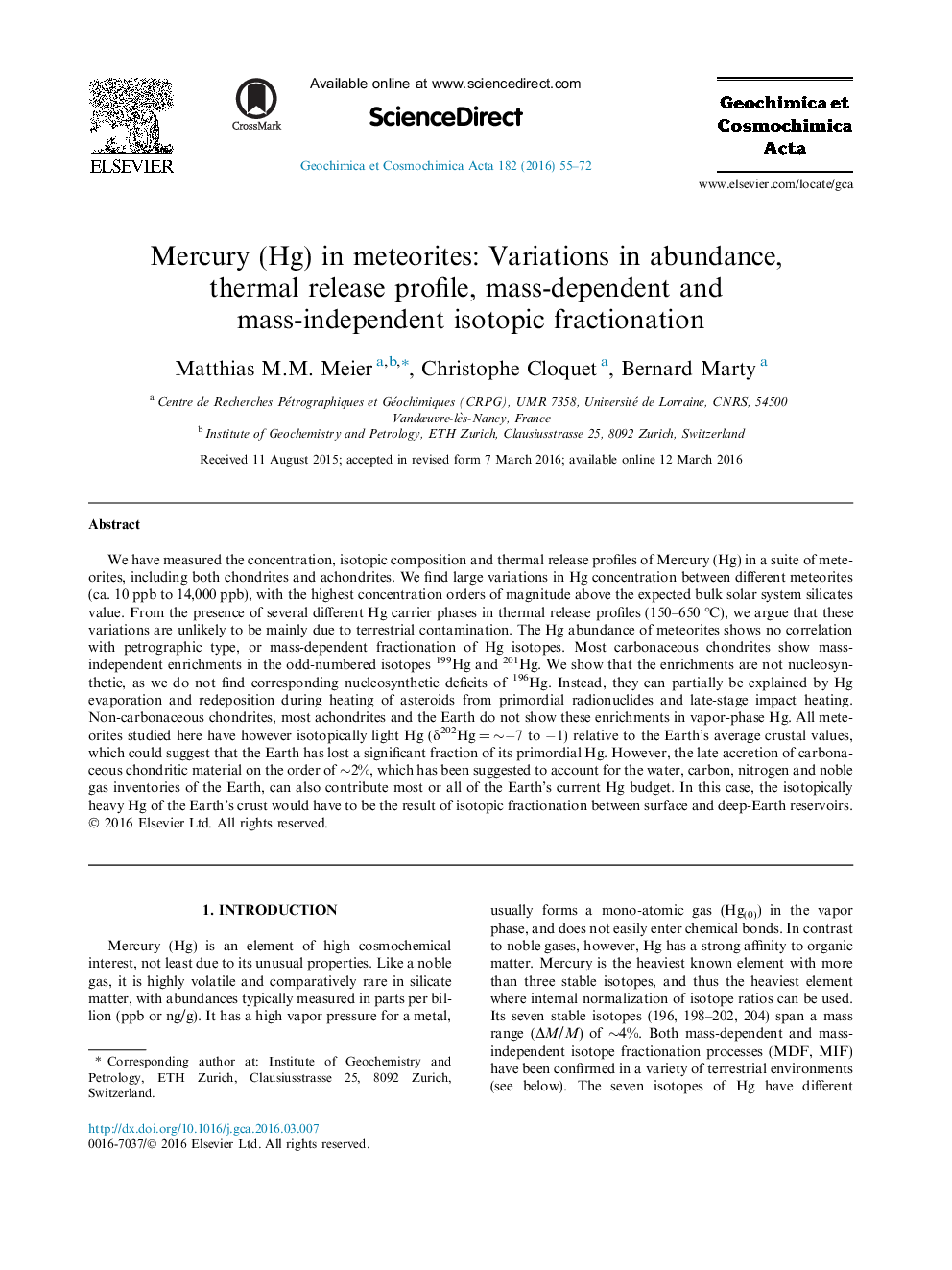| کد مقاله | کد نشریه | سال انتشار | مقاله انگلیسی | نسخه تمام متن |
|---|---|---|---|---|
| 6437430 | 1637975 | 2016 | 18 صفحه PDF | دانلود رایگان |
We have measured the concentration, isotopic composition and thermal release profiles of Mercury (Hg) in a suite of meteorites, including both chondrites and achondrites. We find large variations in Hg concentration between different meteorites (ca. 10 ppb to 14,000 ppb), with the highest concentration orders of magnitude above the expected bulk solar system silicates value. From the presence of several different Hg carrier phases in thermal release profiles (150-650 °C), we argue that these variations are unlikely to be mainly due to terrestrial contamination. The Hg abundance of meteorites shows no correlation with petrographic type, or mass-dependent fractionation of Hg isotopes. Most carbonaceous chondrites show mass-independent enrichments in the odd-numbered isotopes 199Hg and 201Hg. We show that the enrichments are not nucleosynthetic, as we do not find corresponding nucleosynthetic deficits of 196Hg. Instead, they can partially be explained by Hg evaporation and redeposition during heating of asteroids from primordial radionuclides and late-stage impact heating. Non-carbonaceous chondrites, most achondrites and the Earth do not show these enrichments in vapor-phase Hg. All meteorites studied here have however isotopically light Hg (δ202Hg = â¼â7 to â1) relative to the Earth's average crustal values, which could suggest that the Earth has lost a significant fraction of its primordial Hg. However, the late accretion of carbonaceous chondritic material on the order of â¼2%, which has been suggested to account for the water, carbon, nitrogen and noble gas inventories of the Earth, can also contribute most or all of the Earth's current Hg budget. In this case, the isotopically heavy Hg of the Earth's crust would have to be the result of isotopic fractionation between surface and deep-Earth reservoirs.
Journal: Geochimica et Cosmochimica Acta - Volume 182, 1 June 2016, Pages 55-72
